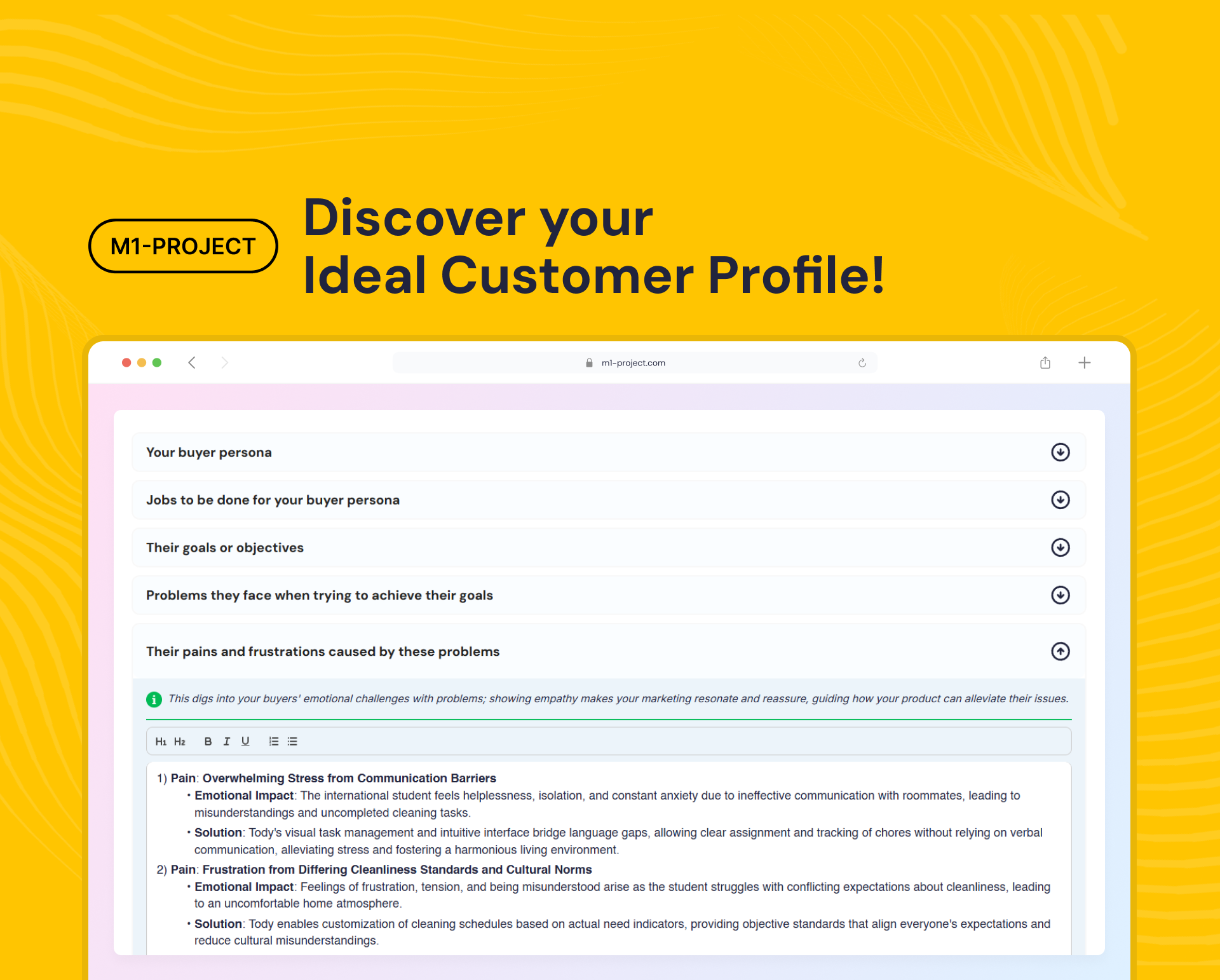Alternatives to Enhencer
1. M1-Project
+Pros
- ICP Generator utilizing 40+ behavioral and demographic indicators reportedly outperforms traditional interest-based targeting by 37% in engagement metrics .
- Cross-funnel audience discovery capabilities exceed Meta's native optimization while enabling external data integration unavailable in platform-native tools .
- Creative automation generates 15-20 ad variants weekly from product catalogs, addressing creative fatigue through systematic rotation while maintaining brand consistency .
- Creative-Bidding Synergy uniquely links audience profiles with real-time bid adjustments, enabling dynamic budget allocation to high-intent segments within 24 hours .
-Cons
- Data dependency represents the primary constraint, with significant performance degradation occurring when customer data inputs are incomplete .
- Creative quality suffers when brand guidelines aren't properly provided, resulting in generic outputs that may underperform custom alternatives .
- Implementation requirements include minimum monthly advertising budgets exceeding $5,000 and catalog sizes above 50 SKUs for algorithm effectiveness, limiting accessibility for smaller businesses .
One highlighted feature and why it's amazing
Utilizes proprietary algorithms to construct ideal customer profiles from 40+ behavioral and demographic indicators .

Another highlighted feature of why it’s amazing
Links audience profiles with real-time bid adjustments, enabling dynamic budget allocation to high-intent segments within 24 hours .
2. Madgicx
+Pros
- Integrated Creative Workflow combining an Ad Library of 1M+ ads with AI-powered creative generation
- iOS Attribution Recovery through Madgicx Cloud Tracking
- Real-World Creative Intelligence using actual successful campaign examples
- Autonomous Optimization reducing manual oversight burden
-Cons
- Google Ads Functionality Gap providing only reporting capabilities
- Conversion Volume Dependency limiting effectiveness for businesses without sufficient monthly conversion data
- Platform Concentration Risk from exclusive Meta focus
- Implementation Complexity with setup challenges
- Budget Threshold Requirements suggesting $2,000-$5,000+ monthly ad spend minimums
One highlighted feature and why it's amazing
Conducts daily AI audits of ad accounts to automatically recommend optimizations and execute budget adjustments based on performance data .

Another highlighted feature of why it’s amazing
Integrates an Ad Library of 1M+ ads with AI-powered creative generation tools .
Other Alternatives
Meta Business Suite Advantage+
How We Researched This Guide
About This Guide: This comprehensive analysis is based on extensive competitive intelligence and real-world implementation data from leading AI vendors. StayModern updates this guide quarterly to reflect market developments and vendor performance changes.
184+ verified sources per analysis including official documentation, customer reviews, analyst reports, and industry publications.
- • Vendor documentation & whitepapers
- • Customer testimonials & case studies
- • Third-party analyst assessments
- • Industry benchmarking reports
Standardized assessment framework across 8 key dimensions for objective comparison.
- • Technology capabilities & architecture
- • Market position & customer evidence
- • Implementation experience & support
- • Pricing value & competitive position
Research is refreshed every 90 days to capture market changes and new vendor capabilities.
- • New product releases & features
- • Market positioning changes
- • Customer feedback integration
- • Competitive landscape shifts
Every claim is source-linked with direct citations to original materials for verification.
- • Clickable citation links
- • Original source attribution
- • Date stamps for currency
- • Quality score validation
Analysis follows systematic research protocols with consistent evaluation frameworks.
- • Standardized assessment criteria
- • Multi-source verification process
- • Consistent evaluation methodology
- • Quality assurance protocols
Buyer-focused analysis with transparent methodology and factual accuracy commitment.
- • Objective comparative analysis
- • Transparent research methodology
- • Factual accuracy commitment
- • Continuous quality improvement
Quality Commitment: If you find any inaccuracies in our analysis on this page, please contact us at research@staymodern.ai. We're committed to maintaining the highest standards of research integrity and will investigate and correct any issues promptly.